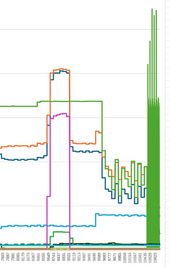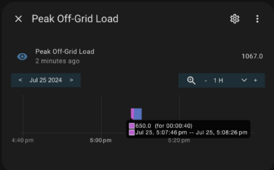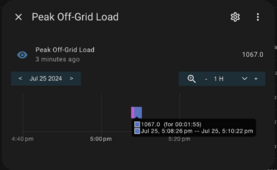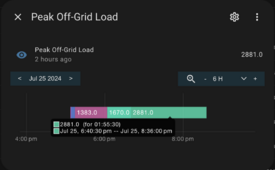Zwy
Emperor Of Solar
The Eyedro in my house is like that, it only uses mains current flow. I actually prefer it over the Emporia in the shop.Just curious, why do people need more than 3 hours of 1 second data? I have the gen 2 (only CTs on mains) and it is adequate for my needs. I just open the app up when I am testing something. All I need is to see what is going on at that particular moment.
After you observe various loads, you can pretty well discern which loads are on. If I don't know, I ask my wife what she is doing at the moment.
Eyedro will give peak demand and calculate usage over long periods. I use it to know how much PV was generated and used on our system as we run the house off grid. Great graphing and historical data. One can zoom in any time. Emporia is severely lacking in application.
I just checked out consumption on the Eyedro since we flipped the switch and I have back 10% of my system cost since then. Max demand was 6.7Kw at 11:54 AM, (wife came home to make lunch- microwave and I'm sure she flipped on plenty of loads). I can zoom in on graphs to 1 second interval.









